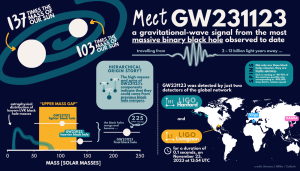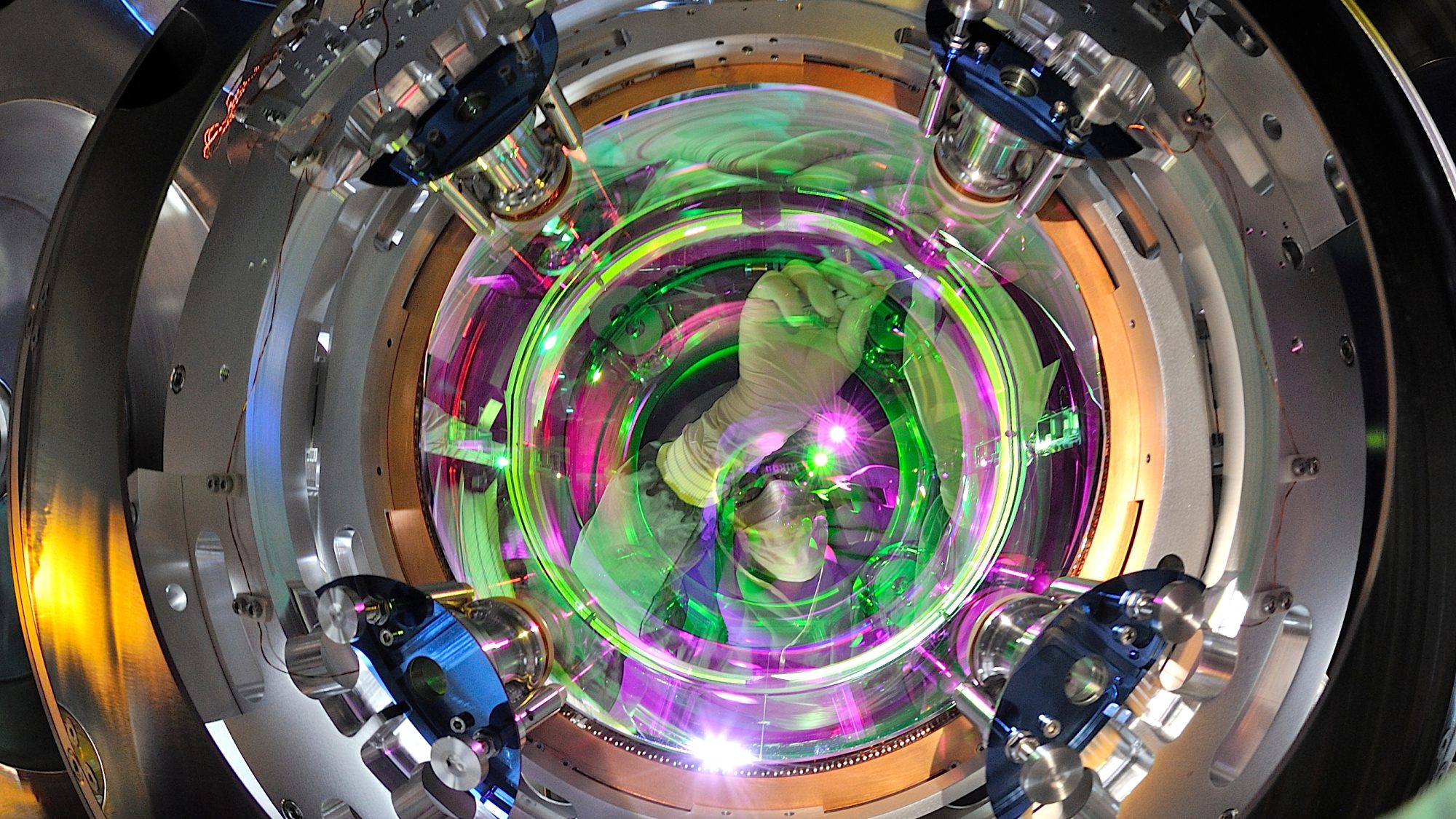In a cosmic event that defies current scientific understanding, astronomers have confirmed the most massive black hole merger ever recorded.
Using gravitational waves – ripples in the fabric of spacetime – the LIGO-Virgo-KAGRA (LVK) Collaboration observed two enormous black holes crashing together to form a single, ultra-massive entity over 225 times the mass of the Sun.
This record-breaking discovery not only challenges existing theories of how black holes form and evolve but also marks a significant leap forward for gravitational-wave astronomy.
Detected initially on 23 November 2023, and dubbed GW231123, the signal is already reshaping the way scientists think about the most extreme objects in the Universe.
The data was captured by the U.S. National Science Foundation-funded LIGO detectors in Hanford and Livingston, with vital contributions from Virgo in Italy and KAGRA in Japan.
Global collaboration powers discovery
The LIGO-Virgo-KAGRA Collaboration is a massive international effort involving over 2,000 scientists from more than 300 institutions worldwide.
Each observatory contributes unique technological strengths:
- LIGO, operated by Caltech and MIT, is supported by the U.S. NSF and international partners.
- Virgo, located in Italy, is operated by the European Gravitational Observatory and funded by research agencies across Europe.
- KAGRA, in Japan, is hosted by the University of Tokyo’s Institute for Cosmic Ray Research and co-managed by major Japanese scientific institutions.
These facilities form a globally distributed observatory capable of triangulating cosmic events with exceptional precision.
Breaking boundaries of stellar evolution
What makes GW231123 particularly puzzling is not just its sheer scale, but also the intense spin of the merging black holes.
Rapid rotation and unusually high mass suggest a complex formation history, likely involving prior black hole merger, an evolutionary pathway that current models don’t readily explain.
Traditional theories of stellar evolution predict an upper limit for black hole masses formed from dying stars.
These new observations push far beyond those limits, compelling astrophysicists to reconsider how such supermassive objects might arise.
Theories involving hierarchical mergers – successive collisions and fusions of smaller black holes – are gaining traction as a possible explanation.

Gravitational-wave detection at its limits
GW231123 not only sets a new benchmark for mass but also pushes the technological and analytical limits of gravitational-wave astronomy.
Accurately interpreting the signal required advanced modelling that accounts for the chaotic behaviour of spinning black holes – a feat that would have been impossible just a few years ago.
This event demonstrates the extraordinary capabilities of next-generation gravitational-wave detectors. The fourth observing run, which began in May 2023, features the longest and most sensitive observation campaign to date.
Results from the first half of this run are expected to be published later this summer, with many more discoveries anticipated through 2026.
A new era for black hole astronomy
GW231123 surpasses the previous heavyweight record-holder, GW190521, which involved black holes with a combined mass of 140 solar masses.
With over 100 black hole mergers now catalogued since the first detection in 2015, each new event adds vital pieces to the cosmic puzzle.
This particular black merger is a turning point, offering new insights into the lifecycle of massive celestial bodies and the nature of spacetime itself.
It underscores the need for evolving theoretical frameworks and more sophisticated models of how black holes form, grow, and interact.
Open data and deeper insights
The LVK Collaboration continues to support open science by releasing data after publication, enabling broader scientific analysis and accelerating discovery.
GW231123 will be showcased this week at the GR-Amaldi 2025 conference in Glasgow, where researchers will discuss the profound implications of this find.
As gravitational-wave observatories grow more sensitive and analytical methods become more refined, we can expect even deeper insights into the most extreme phenomena in the Universe.
